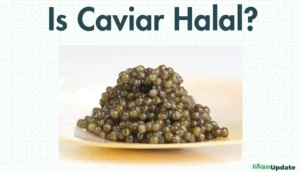Is Red 40 Halal? Understanding the Halal Guidelines

Red 40, also known as Allura Red AC or FD&C Red No. 40, is one of the most widely used synthetic food colorings worldwide. It’s present in countless products ranging from candy to cosmetics. For Muslim consumers, the concern lies in whether this ingredient is halal (permissible) according to Islamic dietary rules.
In this article, we will explore the origin, composition, and manufacturing process of Red 40 to determine if it meets halal standards. We’ll also cover how to identify it in products, potential cross-contamination risks, and practical tips to ensure your purchases align with halal principles.
Is Red 40 Halal?
Red 40 is generally considered halal since it is synthetically derived from petroleum and contains no animal products such as pork or insects. Many halal certification organizations, including IFANCA (Islamic Food and Nutrition Council of America), have approved it for consumption.
The lack of animal-based components or alcohol solvents during production makes it permissible according to most Islamic scholars.
However, it’s important to exercise caution. While Red 40 itself is halal, the products containing Red 40 may include other haram (forbidden) ingredients. Examples include non-halal gelatin, emulsifiers derived from animal fats, or alcohol-based flavorings.
If these substances are present, the overall product would not be halal, despite containing halal-certified food dye.
Another potential issue is cross-contamination during production. In some factories, products containing Red 40 may be processed alongside non-halal foods, which could raise concerns for strict halal consumers.
This is why it is always advisable to look for reliable halal certification labels on packaged goods. Certifications from organizations like Halal Monitoring Authority (HMA) or Halal Certification Europe (HCE) confirm that both the ingredients and the production process meet halal standards.
In summary, Red 40 is halal when used as a standalone ingredient, but it is essential to assess the entire product to ensure full compliance with halal guidelines.
READ ALSO: Is Pepsi Halal? A Complete Analysis of Ingredients
What Is Red 40? Ingredients and Manufacturing Process
Red 40, also known by names like E129 or C.I. Food Red 17, is a synthetic food coloring. It was originally derived from coal tar, but modern manufacturing relies on petroleum derivatives.
The raw petroleum is chemically processed to extract certain molecules, which are then manipulated with other chemicals to create the vibrant red hue.
This process involves no animal or insect-based materials, making Red 40 an acceptable additive for most halal consumers.
The chemicals used during production undergo rigorous testing to ensure safety for consumption. The FDA and European Food Safety Authority (EFSA) have approved Red 40 for use in food, beverages, and cosmetics.
However, synthetic dyes like Red 40 have attracted health concerns over the years, with some studies suggesting they may cause hyperactivity in children or allergic reactions. Despite these claims, regulatory bodies maintain that it is safe when consumed in moderation.
In addition to its widespread use in food products, Red 40 also appears in cosmetics and skincare products, such as lipsticks, blush, and body washes.
While cosmetics are not consumed, some Muslim consumers prefer to avoid non-halal cosmetics, particularly those applied to the lips, which could be accidentally ingested.
Consumers should also be aware of “Red 40 Lake”, a water-insoluble form of the dye often used in baked goods, beverages, and medications.
Although the chemical structure remains the same, the lake version may behave differently in food processing, which is why it is essential to read ingredient labels carefully.
How to Spot Red 40 in Products and Identify Halal Certifications
Red 40 can appear under various names, making it crucial to read product labels thoroughly. Manufacturers may list it as:
- Allura Red / Allura Red AC
- Red 40 / Red Dye 40 / FD&C Red No. 40
- E129 / C.I. 16035
- Red 40 Lake
Food dyes like Red 40 are often listed near the end of ingredient lists due to their low concentrations in products. However, their impact on the final product’s color is significant, making them a popular choice in candies, cereals, and beverages.
When scanning labels, it’s also important to look for halal certification symbols to ensure the entire product is permissible.
Halal consumers should be aware that some international products may use different names for Red 40. For instance, in Europe, it is labeled as E129, while in the US and Canada, it often appears as FD&C Red No. 40. If unsure, reach out to the manufacturer for clarification on the ingredient’s origin and whether it meets halal standards.
Additionally, products such as medications or supplements that contain Red 40 may not always carry halal certification, even though the dye itself is halal. In these cases, ask your pharmacist for alternatives or consult with halal certification bodies for approved options.
Common Products Containing Red 40: What to Watch Out For
Red 40 is found in both food and non-food products. Below are some common items where this dye is used:
Food and Beverages:
- Flavored candy (e.g., red Skittles, gummy bears)
- Breakfast cereals (e.g., Trix, Fruity Cheerios)
- Dairy products (e.g., strawberry yogurt, ice cream)
- Spicy chips and red-colored sauces
- Sports drinks and fruit-flavored beverages
Cosmetics and Personal Care Products:
- Lipsticks, lipliners, and blushes
- Red or pink eyeshadows
- Colored body washes and suntan lotions
Medications:
- Cough syrups and chewable vitamins
- Pills with red or pink coatings
When in doubt, always check the ingredient list and look for halal certification symbols. If a product lacks certification, it is advisable to contact the manufacturer directly or seek alternatives that are clearly marked as halal.
FAQs about Red 40 and Halal Consumption
1. Is Red 40 always halal?
Red 40 itself is considered halal due to its synthetic nature, but the product containing it may not be. Check for halal certification to ensure the product is permissible.
2. Does Red 40 contain alcohol?
No, Red 40 does not contain alcohol. However, some products with Red 40 may use alcohol-based solvents, which evaporate during processing.
3. Can Red 40 cause health problems?
Some studies suggest that Red 40 may trigger allergic reactions or hyperactivity in children. Regulatory bodies recommend consuming it in moderation.
4. Is Red 40 used in halal cosmetics?
Red 40 is used in many cosmetics, but not all are halal-certified. Check for halal labels, especially for lip products that may be ingested.
Conclusion: Ensuring Red 40 and Its Products Are Halal
In conclusion, Red 40 is halal as an ingredient, as it is derived from petroleum and contains no animal or alcohol-based components. However, the product it is used in must also meet halal guidelines, as cross-contamination or haram ingredients could render it impermissible.
To ensure compliance, always check ingredient lists and halal certifications on food, drinks, and cosmetics. If you are unsure about a product’s halal status, contact the manufacturer or seek alternatives with certified halal labeling. By staying informed, you can confidently make choices that align with your beliefs.
Key Takeaways
- Red 40 is halal as a synthetic dye derived from petroleum.
- Products containing Red 40 may still be non-halal due to cross-contamination or other haram ingredients.
- Look for halal certification logos to confirm the product’s permissibility.
- Consume Red 40-containing products in moderation to avoid potential health risks.







77 canadian pharmacy
https://expresscanadapharm.com/# Express Canada Pharm
legit canadian pharmacy
Бескудников, искусственно зевнув, вышел из комнаты. накрутка поведенческих факторов программа в москве скидка Посмотрите на его постную физиономию и сличите с теми звучными стихами, которые он сочинил к первому числу! Хе-хе-хе… «Взвейтесь!» да «развейтесь!»… а вы загляните к нему внутрь – что он там думает… вы ахнете! – И Иван Николаевич зловеще рассмеялся.